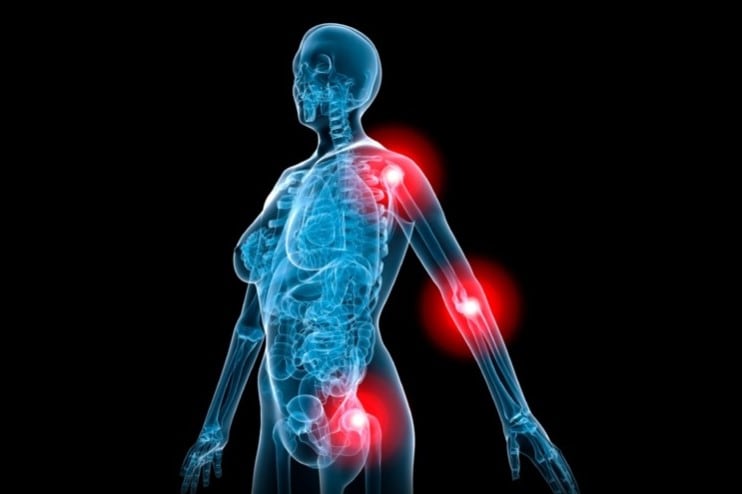The paper, part funded by TINE SA, the manufacturers of Jarlsberg cheese, concludes that a small (57 grams (g)) daily portion may help to stave off osteopenia/osteoporosis without boosting harmful low-density cholesterol.
“This study shows that while calcium and vitamin D are known to be extremely important for bone health, there are other key factors at play, such as vitamin K2, which is perhaps not as well known,” comments Professor Sumantra Ray, Executive Director, NNEdPro Global Centre for Nutrition and Health, which co-owns the journal.
However, Professor Jonathan Reeve from the University of Oxford, is critical of the study in which he says, “In my opinion this paper stretches credulity.
“A bone anabolic response implies that more bone tissue has been formed than in the control group.
“This is not proved to be the case; a biochemical marker that may or may not co-correlate with bone formation has been shown to increase with Jarlsberg consumption.
“The recommendation to consume K2 (one of the forms of vitamin K) to prevent osteoporosis was unique to Japan so far as I know and dates from 11 years ago, not being replicated outside the Far East.”
Poor correlation
Professor Reeve, an Honorary Senior Research Fellow, comments that biochemical markers correlate quite poorly in general with the results of serial bone densitometry, though this is not always true.
“The authors might have served science better to have done a one-year bone densitometry study,” he adds
The study, which suggests the bone-protecting effects are specific to this type of cheese, studied 66 healthy women (average age 33; average BMI of 24).
The group were randomly allocated to adding either a daily 57g portion of Jarlsberg (sample size - 41) or 50g of Camembert cheese (25) to their diet for 6 weeks.
At the end of this period, the group eating Camembert was switched to Jarlsberg for another six weeks.
Every six weeks blood samples were taken from all the participants to check for key proteins, a peptide (PINP) involved in bone turnover and osteocalcin, a hormone linked to strong bones and teeth. Vitamin K2 and blood fat levels were also measured.
Study findings
Findings revealed that key biochemical markers of bone turnover, including osteocalcin, and vitamin K2 increased significantly after 6 weeks in the Jarlsberg group.
In the Camembert group, PINP levels remained unchanged with other biochemical markers falling slightly.
However, they increased significantly after switching to Jarlsberg. PINP levels also increased.
While blood fats increased slightly in both groups after 6 weeks, levels of total cholesterol and LDL cholesterol fell significantly in the Camembert group after they switched to Jarlsberg.
Glycated haemoglobin (HbA1c) - the amount of glucose stuck in red blood cells—fell significantly (by 3%) in the Jarlsberg group, while it rose sharply (by 2%) in those eating Camembert. But after switching to Jarlsberg HbA1c fell significantly in this group too.
“Daily Jarlsberg cheese consumption has a positive effect on osteocalcin, other [markers of bone turnover], glycated haemoglobin and lipids,” write the researchers.
They go on to suggest that Jarlsberg cheese might therefore help to prevent osteopenia—the stage before osteoporosis—as well as metabolic diseases, such as diabetes, although further research would be needed to confirm this, they emphasise.
‘Play of chance’
Tom Sanders, Professor emeritus of Nutrition and Dietetics, King’s College London, is critical of the study design,
“Firstly, they fed 57g Jarlsberg cheese per day compared with variable amounts of camembert, 30-60g per day,” he says.
“Secondly, they failed to take into account that camembert contains much more water than Jarlsberg so the protein and fat content differed substantially between treatment groups: the Jarlsberg treatment group provided 16g each of fat and protein per day compared with 6-12 g each in the camembert group.”
Regarding the minor changes found with glycated haemoglobin (HbA1c), Professor Sanders dismissed the findings as a “play of chance.”
He added the finds to be of no clinical significance as the participants did not have diabetes.
Source: BMJ Nutrition Prevention & Health
Published online: DOI10.1135/bmjnph-2022-000424
“Effect on bone anabolic markers of daily cheese intake with and without vitamin K2: a randomised clinical trial.”
Authors: Helge Einar Lundberg et al.

